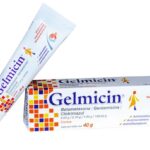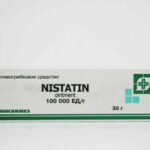Vitamicin: Side Effects, Dosage, Uses, and Review

Vitamicin Unguento is an anti-inflammatory, antibiotic, anti-inflammatory and healing ointment for the local treatment of infected wounds and ulcers. It contains Neomycin sulfate 10mg, hydrocortisone 10mg, panthenol 25mg, vitamin A palmitate 11,000 IU, and benzocaine 10mg as active ingredients.
Vitamicin ointment also prevents and cures skin infections, reduces inflammation or reduces pain in the affected skin, moisturizes the affected area and promotes skin healing by relieving itching and burning. Vitamicin ointment should not be used to treat pain in infants, and is not approved for use in a child younger than 2 years old.
How should I use Vitamicin Ointment?
Vitamicin ointment is usually used two to four times a day. Use this combination cream at around the same times every day. Follow the directions on your prescription label carefully, and ask your doctor or pharmacist to explain any part you do not understand. Use Vitamicin ointment exactly as directed. Do not use more or less of it or use it more often than prescribed by your doctor.
Vitamicin ointment is only for use on the skin. Do not use the medication in your eyes. Do not use the medication in your ears if you have a hole or tear in your eardrum.
To use Vitamicin ointment, apply a small amount of medication to cover the affected area of skin with a thin, even film and rub in gently. Do not wrap or bandage the treated area unless your doctor tells you that you should.
Your symptoms should begin to improve during the first few days of treatment with Vitamicin ointment. If redness, irritation, swelling, or pain do not improve or get worse, stop using the medication and call your doctor. Do not use this medication longer than 7 days, unless directed to do so by your doctor. This medication may be prescribed for other uses; ask your doctor or pharmacist for more information.
What are the side effects of Vitamicin ointment?
Vitamicin ointment like other medications can cause side effects. A side effect is an unwanted response to a medication when it is taken in normal doses. Side effects can be mild or severe, temporary or permanent.
The side effects listed below are not experienced by everyone who takes this medication. If you are concerned about side effects, discuss the risks and benefits of this medication with your doctor.
The following side effects have been reported by at least 1% of people taking this medication. Many of these side effects can be managed, and some may go away on their own over time.
Contact your doctor if you experience these side effects and they are severe or bothersome. Your pharmacist may be able to advise you on managing side effects.
• burning, dryness, irritation, itching, or redness of skin
• burning or stinging when applying medication
• increased redness or scaling or skin sores
• skin rash
Although most of the side effects listed below don’t happen very often, they could lead to serious problems if you do not seek medical attention.
Check with your doctor as soon as possible if any of the following side effects occur:
• increased skin sensitivity
• lack of healing of skin condition
• painful, red or itchy, pus-containing blisters in hair follicles
• skin infection
• thinning of skin with easy bruising
Stop taking the medication and seek immediate medical attention if any of the following occur:
• signs of an allergic reaction such as severe rash or hives, difficulty breathing, or swelling
Some people may experience side effects other than those listed. Check with your doctor if you notice any symptom that worries you while you are taking this medication.
Vitamicin Ointment Safety Information
This medication contains benzocaine which can cause methemoglobinemia, a condition in which the amount of oxygen carried through the blood is greatly reduced. Methemoglobinemia, can be life-threatening and result in death.
FDA warns consumers using benzocaine products to treat mouth pain to seek medical attention immediately for signs and symptoms of methemoglobinemia. These include pale, gray or blue-colored skin, lips, and nail beds; shortness of breath; fatigue; confusion; headache; lightheadedness; and fast heart rate. Signs and symptoms of methemoglobinemia may appear within minutes to one to two hours after using benzocaine. Symptoms may occur after using benzocaine for the first time, as well as after prior uses.





